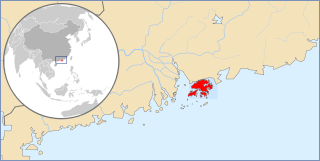
This is a list of dialing codes in Greece. The first digit represents the type of service. 1 is used for short codes, 2 for geographical numbers, 5 is used for inter-network routing purposes and VPNs, 6 for mobile services, 7 is reserved for universal access numbers, 8 for reduced-fee services, 9 is used for premium rate services. All dialable numbers are ten digits, except for short codes, 807-XXXX used for calling card access codes, and numbers in the 5 range, used for routing purposes and not dialable by end-subscribers.
A toll-free telephone number or freephone number is a telephone number that is billed for all arriving calls. For the calling party, a call to a toll-free number from a landline is free of charge. A toll-free number is identified by a dialing prefix similar to an area code. The specific service access varies by country.
A telephone numbering plan is a type of numbering scheme used in telecommunication to assign telephone numbers to subscriber telephones or other telephony endpoints. Telephone numbers are the addresses of participants in a telephone network, reachable by a system of destination code routing. Telephone numbering plans are defined in each of the administrative regions of the public switched telephone network (PSTN) and in private telephone networks.

Telephone numbers in the United Kingdom are administered by the Office of Communications (Ofcom). For this purpose, Ofcom established a telephone numbering plan, known as the National Telephone Numbering Plan, which is the system for assigning telephone numbers to subscriber stations.

The Australian telephone numbering plan describes the allocation of phone numbers in Australia. It has changed many times, the most recent major reorganisation by the Australian Communications & Media Authority taking place between 1994 and 1998.

The French telephone numbering plan is used in Metropolitan France, French overseas departments and some overseas collectivities.
Telephone numbers in Japan consist of an area code, an exchange number, and a subscriber number.

Telephone numbers in Hong Kong are mostly eight-digit. Fixed land line numbers start with 2 or 3, mobile (cellular) phone numbers with 5, 6, 7 or 9, pager numbers with 7 and forwarding service with 8. Since the end of 1989, there have been no area codes within Hong Kong.

Numbers on the Irish telephone numbering plan are regulated and assigned to operators by ComReg.

The dialling plan for mobile networks and new landline operators is closed; all subscriber numbers must be dialled in full. For landline numbers starting with 02, the dialling plan used to be open; the trunk digit and area code could be omitted if the caller was in the same area code as the callee. However, starting May 3, 2008, all landline numbers must be dialled in full.

Telephone numbers in Malaysia are regulated by the Malaysian Communications and Multimedia Commission (MCMC).

The format of telephone numbers in Australia has changed over time to allow for the expansion of the subscriber base as technology has improved.

Telephone numbers in Israel consist of an area code and a subscriber number. The dial plan type in Israel is closed, and "0" is the internal Trunk prefix in Israel. Israel's country calling code is +972.

The regulation of telephone numbers in Germany is the responsibility of the Federal Network Agency of the German government. The agency has a mandate to telecommunications in Germany and other infrastructure systems.

Until 1999, Tanzania, Kenya and Uganda shared a telephone numbering plan, in which subscribers were only required to dial the trunk code, area code and number. In that year, Tanzania adopted a new numbering plan. Calls to Kenya and Uganda require a regional prefix rather than having to use full international dialling. To call Kenya from Tanzania, subscribers dial 005 instead of +254, while to call Uganda, they dial 006 rather instead of +256. To call Tanzania from Kenya and Uganda, subscribers dial 007 instead of +255.
National conventions for writing telephone numbers vary by country. While international standards exist in the form of recommendation E.123 by the sector ITU-T of the International Telecommunication Union (ITU), national telephone numbering plans define the format of telephone numbers assigned to telephones and similar communication endpoints.

A telephone number is a sequence of digits assigned to a landline telephone subscriber station connected to a telephone line or to a wireless electronic telephony device, such as a radio telephone or a mobile telephone, or to other devices for data transmission via the public switched telephone network (PSTN) or other public and private networks.

Telephone numbers in Georgia consist of 9 digits and follow a closed numbering plan in which the initial 2 or 3 digits indicate the service or area code and the remaining 6 or 7 digits identify the subscriber.














